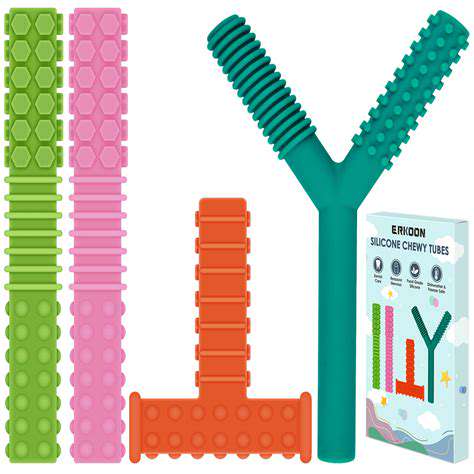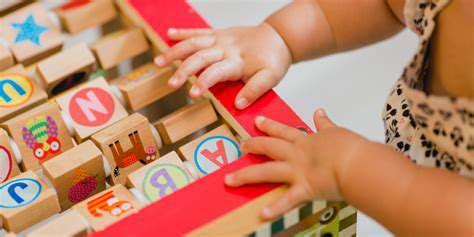Creating a Safe and Chew Proof Environment for Your Dog
Identifying Your Dog's Chewing Triggers

Understanding the Root Causes
Dogs chew for a variety of reasons, ranging from simple boredom and stress to more complex underlying health issues. Pinpointing the exact cause is vital for effective intervention and preventing future chewing problems. Recognizing the triggers, whether it's a lack of mental stimulation, anxiety, or pain, enables owners to tackle the root issue rather than just the symptom. A bored dog might chew out of frustration and a lack of appropriate outlets for energy, while a dog experiencing pain might chew to alleviate discomfort or shift their focus. This initial evaluation is critical to developing a successful training and management plan.
Beyond these common triggers, certain breeds are naturally inclined to chewing behaviors. A breed's inherent traits can influence their tendency to chew, and this knowledge can help owners anticipate potential issues and proactively implement strategies to prevent excessive or destructive chewing. For instance, some breeds, known for their high energy levels and strong jaws, may require more robust training and environmental enrichment to channel their chewing impulses in a positive direction. Understanding these breed-specific predispositions can guide owners in providing the right kind of stimulation and preventing unwanted damage to furniture or belongings.
Addressing the Problem Effectively
Once the underlying causes of your dog's chewing are identified, you can develop a customized strategy for addressing the behavior. This may involve providing more opportunities for exercise and mental stimulation, such as interactive toys, puzzle feeders, or even training sessions. A consistent routine, including regular feeding times and playtime, can help establish a sense of predictability and reduce anxiety that might lead to chewing.
Addressing any potential health concerns is also important. If your dog is showing signs of pain or discomfort, a visit to the veterinarian is essential to rule out any underlying medical conditions. Pain or discomfort can often manifest as increased chewing activity, making it vital to determine if there's a medical component to the problem before focusing solely on behavioral modification. Consult with a veterinarian or certified professional dog trainer to determine the best course of action for your specific situation.
Providing appropriate chew toys is another key element of addressing excessive chewing. Offering a variety of textures, sizes, and types of chew toys can help satisfy your dog's natural instinct to chew while protecting your belongings. Supervision and consistent management are important to prevent destructive behaviors from developing into ingrained habits. Safe and suitable chew toys can divert your dog's attention and energy away from inappropriate targets.
A thorough understanding of your dog's individual needs, coupled with a proactive approach to addressing the root causes, is key to effectively managing and preventing chewing behaviors.
Strategically Securing Your Home

Protecting Your Home from Intruders
A strong home security system is more than just a deterrent; it's a crucial investment in peace of mind. Implementing a comprehensive security plan that considers both visible and hidden vulnerabilities is essential. This includes reinforcing weak points in your exterior structure, such as doors and windows, and installing high-quality locks.
Exterior lighting plays a significant role in deterring potential intruders. Strategically placed lights can illuminate dark areas around your home, making it less appealing for criminals and increasing the likelihood of them being spotted. Consider motion-activated lights for an added layer of security.
Evaluating Your Home's Weak Spots
Thoroughly assessing your home's vulnerabilities is the first step toward a robust security strategy. This involves identifying potential entry points, such as unlocked windows, poorly secured doors, or easily accessible areas. A thorough inspection will help you prioritize areas needing immediate attention and identify long-term solutions.
Consider the layout of your property and how it might be exploited by an intruder. High-traffic areas, such as pathways and driveways, should be well-lit and easily monitored. Careful consideration of these details can enhance your home's overall security posture.
Installing Advanced Security Systems
Modern security systems offer a wide range of features that go beyond basic alarms. Smart home technology allows for remote monitoring, automated alerts, and integrated control over lighting, locks, and other security devices. This level of sophistication adds a significant layer of protection to your home.
Integrating smart devices can significantly enhance your home's security and provide peace of mind. Real-time alerts and remote access features are invaluable in monitoring your property's safety and responding to potential threats quickly.
Enhancing Exterior Security Measures
Reinforcing your home's exterior is vital for preventing unauthorized access. This includes installing strong locks on all doors and windows, using reinforced door frames, and installing security bars or grilles on vulnerable windows. These measures create a significant physical barrier against intruders.
A well-maintained landscaping can also contribute to a more secure environment. Strategically placed shrubs and bushes can obscure views and create a sense of privacy, deterring potential intruders. Consider installing motion-sensing sprinklers for an added layer of deterrence.
Utilizing Surveillance Technology
Security cameras, both wired and wireless, offer a powerful tool for deterring and detecting criminal activity. Strategically placed cameras can monitor high-risk areas and provide valuable evidence in the event of a break-in. Choose cameras with clear night vision capabilities for optimal performance in low-light conditions.
Implementing Interior Security Measures
Interior security measures are equally important as exterior ones. These include securing valuables, using strong interior locks, and creating a well-lit and monitored environment. Implementing these measures can significantly reduce the risk of theft and property damage. Consider installing motion-sensor lights inside your home for additional deterrents.
Creating a Secure Environment
A secure home environment extends beyond physical measures. It encompasses a conscious effort to maintain a well-lit and monitored space, including clear pathways to and from your home. A secure home is a safe home, and it starts with creating a clear and visible deterrent to potential intruders.
This proactive approach to security requires a combination of preventative measures and responsive strategies. By carefully considering your home's vulnerabilities and implementing appropriate security measures, you can significantly enhance your safety and peace of mind.

Maintaining a Routine and Providing Mental Stimulation
Establishing a Predictable Routine
A consistent daily routine is paramount for a pet's well-being, particularly for a chewer. Predictable schedules help reduce anxiety and stress, which can manifest in destructive chewing behaviors. Knowing when meals are served, playtime begins, and rest time is scheduled allows the pet to anticipate and adjust to the day's rhythm. This predictability translates into a calmer and more secure environment, minimizing the likelihood of boredom-driven chewing.
Consistency extends beyond mealtimes. Regular walks, playtime, and interactions with the owner are crucial components of a routine. These activities not only provide physical exercise but also mental stimulation, which can divert energy from potentially destructive chewing habits. A predictable schedule helps to establish a sense of order and structure, which is essential for a happy and healthy pet.
Engaging Chew Toys and Puzzle Feeders
Providing a variety of engaging chew toys can significantly reduce the urge to chew inappropriate objects. These toys should be durable enough to withstand intense chewing and should be designed to provide mental stimulation. Interactive puzzles and treat-dispensing toys encourage problem-solving and keep the pet mentally engaged, diverting their attention from undesirable chewing targets.
Puzzle feeders are excellent tools for mental stimulation. They require the pet to work for their food, which not only satisfies their natural foraging instincts but also keeps them mentally occupied. This active engagement in finding food helps to reduce boredom and redirect the animal's focus away from destructive chewing.
Rotating different types of chew toys and puzzle feeders helps maintain interest and prevents the pet from becoming bored. This variety ensures that the pet is continuously challenged and stimulated, minimizing the chances of destructive chewing behaviors.
Mental Enrichment Activities
Beyond chew toys, incorporating mental enrichment activities into the routine is essential for a happy and well-adjusted pet. These activities can include training sessions, scent work, or even simply playing hide-and-seek with treats. Training not only strengthens the bond between pet and owner but also provides a mental challenge, which can help to prevent boredom-related chewing.
Scent work, whether it involves following a scent trail or finding hidden treats, is a fantastic way to engage the pet's natural instincts. These activities provide mental stimulation and physical exercise, diverting energy from destructive chewing habits. Utilizing a variety of sensory experiences, including exploring different textures and smells, is also an important part of mental enrichment and can help prevent boredom-driven chewing.
Read more about Creating a Safe and Chew Proof Environment for Your Dog
Hot Recommendations
- The Impact of Early Socialization on a Dog's Interaction with Other Animals
- Car Travel and Puppy Socialization: Making the Journey a Positive Experience
- The Importance of Early Environmental Exposure for Puppy Development
- Taking Your Puppy to the Vet: Positive Socialization Strategies
- Making Training a Positive Experience for Your Puppy
- Public Transportation and Puppy Socialization: A Step by Step Guide
- Safe Socialization: Allowing Others to Pet Your Puppy
- Helping a Puppy Who Struggles with "Stay"
- Positive Puppy Interactions: Making Meetings with New Friends Fun
- No Treats Needed? Training Basic Commands with Verbal Praise











